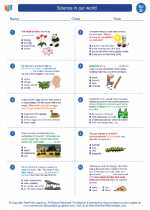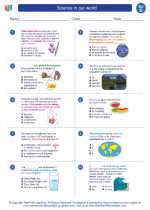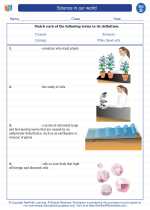Ceramic
Ceramics are non-metallic, inorganic materials that are typically made from clay and then hardened by heat. They are known for their strength, hardness, and ability to withstand high temperatures, making them widely used in various applications.
Types of Ceramics
There are several types of ceramics, including:
- Traditional Ceramics: These are made from clay, silica, and other natural materials. Examples include pottery, porcelain, and bricks.
- Advanced Ceramics: These are engineered ceramics with enhanced properties, such as alumina, zirconia, and silicon carbide. They are used in aerospace, electronics, and medical devices.
- Glass: While not always considered a ceramic, glass is also an inorganic material with similar properties.
Properties of Ceramics
Some key properties of ceramics include:
- Hardness: Ceramics are extremely hard and resistant to scratching.
- Brittleness: They are often brittle and can fracture under high stress, unlike metals which are ductile.
- High Melting Points: Ceramics can withstand high temperatures without melting, making them suitable for use in furnaces and kilns.
- Chemical Inertness: Many ceramics are resistant to chemical corrosion, making them useful for storage and containment.
Uses of Ceramics
Ceramics have a wide range of practical uses, including:
- Building Materials: Bricks, tiles, and cement are all examples of ceramic-based building materials.
- Electronics: Ceramics are used in capacitors, insulators, and piezoelectric devices in electronic equipment.
- Biomedical Applications: Ceramics are used in dental implants, joint replacements, and bone grafts due to their biocompatibility.
- Aerospace: Advanced ceramics are used in jet engine components and thermal protection systems for spacecraft.
Study Guide
For a comprehensive understanding of ceramics, consider the following study guide:
- Learn about the composition and properties of traditional ceramics, such as clay and porcelain.
- Explore the manufacturing processes used to create ceramics, including shaping, glazing, and firing.
- Investigate the applications of advanced ceramics in modern technology and industry.
- Examine the historical and cultural significance of ceramics in art and pottery.
- Understand the environmental impact of ceramic production and potential sustainable practices.
By studying these topics, you can gain a comprehensive understanding of the science and applications of ceramics.
.◂Science Worksheets and Study Guides Fourth Grade. Science in our world
Study Guide Science in our world - 4th gr.
Science in our world - 4th gr.  Worksheet/Answer key
Worksheet/Answer key Science in our world - 4th gr.
Science in our world - 4th gr.  Worksheet/Answer key
Worksheet/Answer key Science in our world - 4th gr.
Science in our world - 4th gr.  Worksheet/Answer key
Worksheet/Answer key Science in our world - 4th gr.
Science in our world - 4th gr.  Vocabulary/Answer key
Vocabulary/Answer key Science in our world - 4th gr.
Science in our world - 4th gr. 

 Worksheet/Answer key
Worksheet/Answer key
 Worksheet/Answer key
Worksheet/Answer key
 Worksheet/Answer key
Worksheet/Answer key
 Vocabulary/Answer key
Vocabulary/Answer key

The resources above cover the following skills:
History and Nature of Science: A student should understand the history and nature of science. A student who meets the content standard should:
Develop an understanding that historical perspectives of scientific explanations demonstrate that scientific knowledge changes over time, building on prior knowledge.
Develop an understanding that scientific knowledge is ongoing and subject to change as new evidence becomes available through experimental and/or observational confirmation(s).